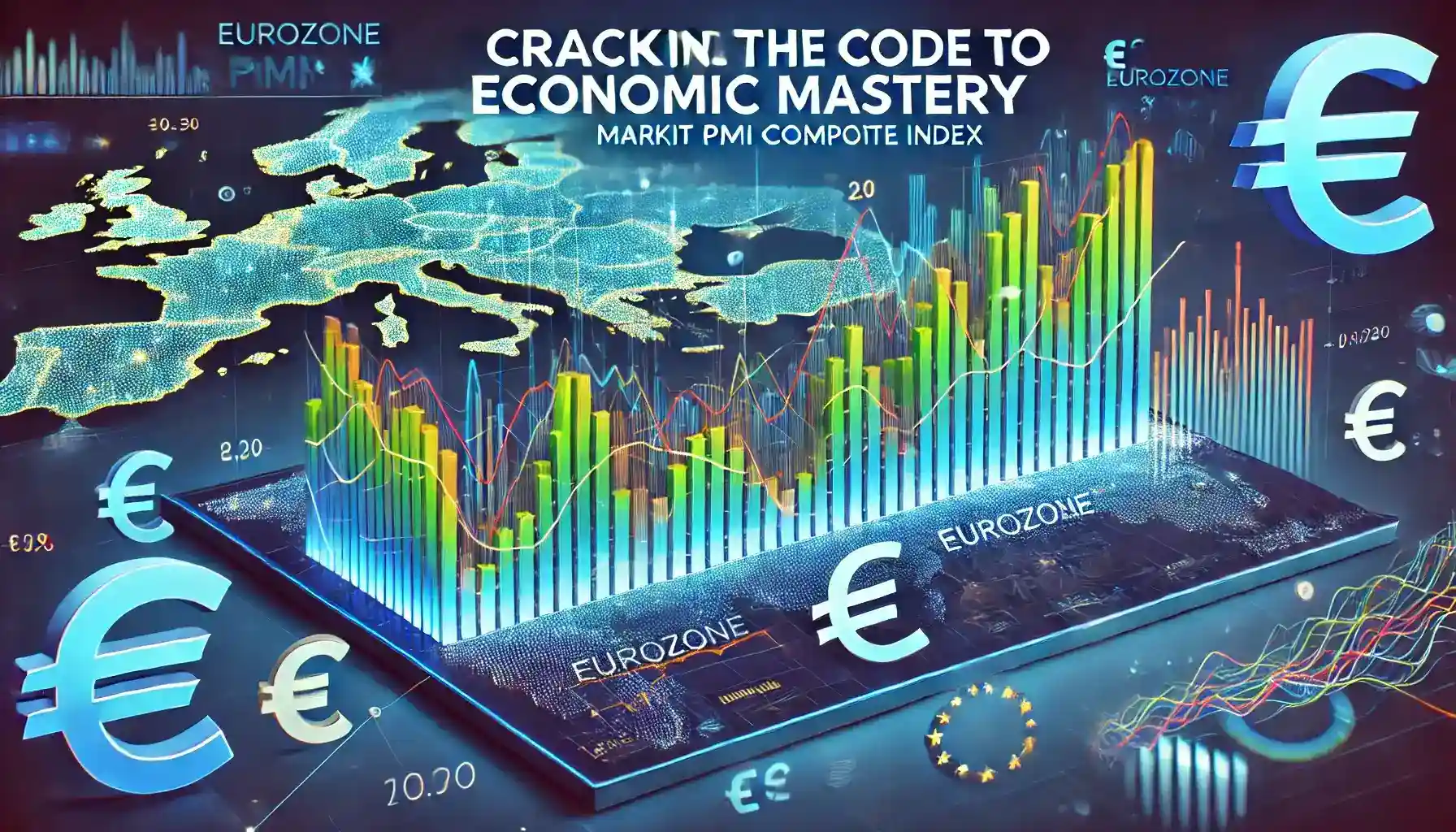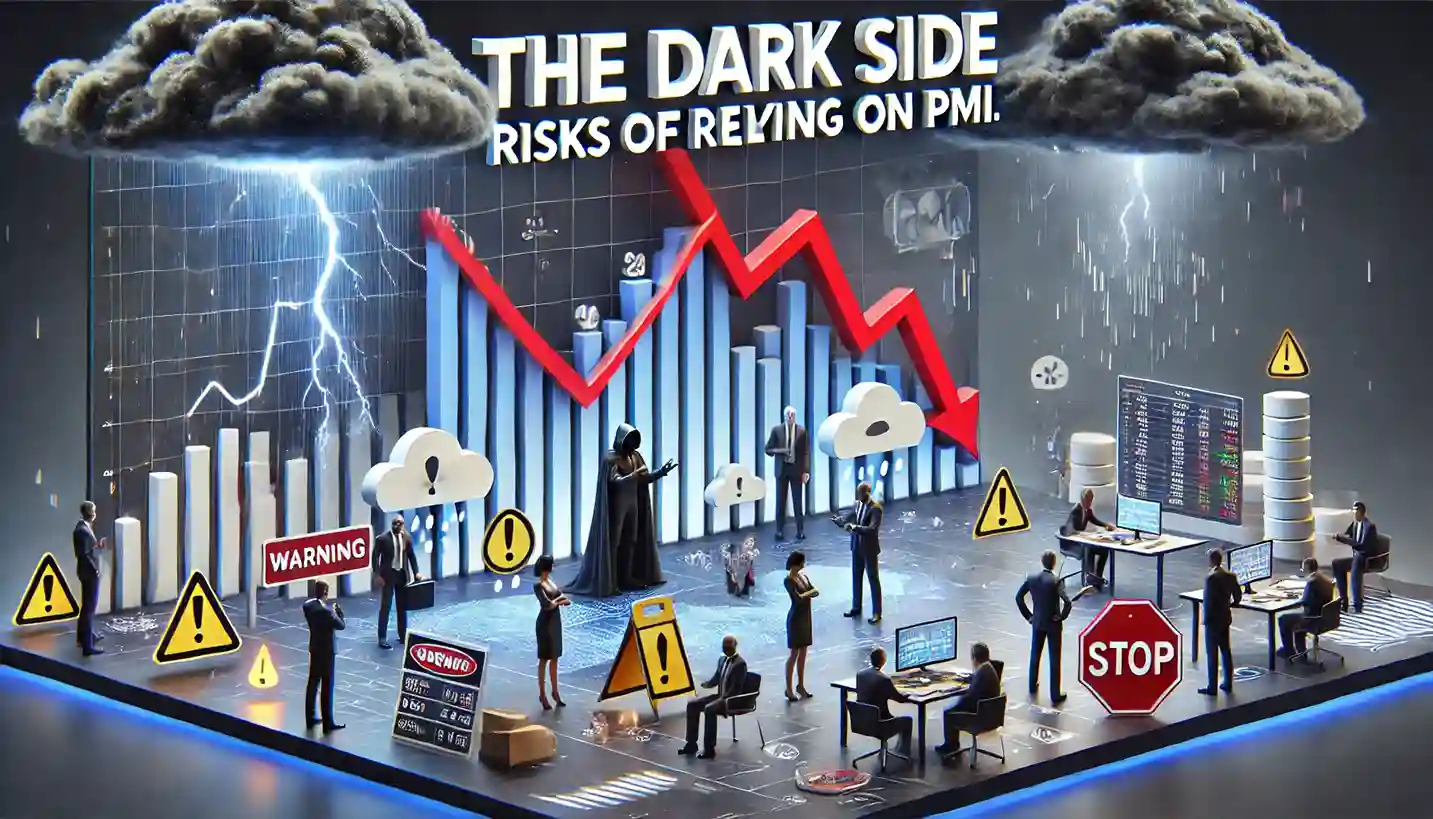The Eurozone Markit PMI Composite can be a game-changer for forex traders. This key economic indicator provides insights into the health of the economy, helping traders make informed decisions. Let’s dive into the nitty-gritty of what this PMI Composite is, how it impacts forex trading, and why it should be on your radar.

What is the Eurozone Markit PMI Composite?
The Eurozone Markit PMI Composite is a monthly economic indicator derived from surveys of over 5,000 businesses across the manufacturing and services sectors. It provides a snapshot of business conditions and economic trends.
Understanding the PMI Components
The PMI Composite is an amalgamation of two separate indices: the Manufacturing PMI and the Services PMI. Both indices are weighted to reflect their relative importance in the economy, offering a comprehensive view of overall business activity.
Why the PMI Matters
Simply put, the PMI Composite is a leading indicator of economic health. A reading above 50 suggests expansion, while below 50 indicates contraction. For forex traders, this information is crucial as it can signal economic strength or weakness, influencing currency movements.
How is the PMI Composite Calculated?
The PMI Composite is not just a random number; it’s calculated based on several factors. Survey responses are collected, and the data is then weighted and seasonally adjusted.
Survey Methodology
Each month, purchasing managers are asked to rate various business conditions such as output, new orders, employment, and prices. These responses are then compiled to form the PMI.
Weighting and Seasonal Adjustments

The data is weighted according to the economic significance of each sector, and seasonal adjustments are made to account for regular variations, ensuring the PMI reflects true economic conditions.
Impact of PMI on Forex Trading
Forex traders pay close attention to the PMI Composite because it can significantly impact currency values. Let’s explore how this works.
Economic Sentiment and Currency Strength
A high PMI reading typically signals economic strength, which can lead to an appreciation of the Euro. Conversely, a low PMI can indicate economic trouble, leading to a depreciation.
Market Volatility
PMI releases often lead to increased market volatility. Traders can capitalize on these movements, but it’s also a double-edged sword – one wrong move, and you could face significant losses.
Historical Trends and Their Implications
Looking at historical PMI data can offer valuable insights into future market movements. Trends and patterns in the PMI Composite can hint at upcoming economic shifts.
Learning from the Past

For instance, a consistent rise in the PMI over several months usually precedes a period of economic growth. Traders who recognize these patterns can position themselves advantageously.
Predictive Power
The PMI’s ability to predict economic conditions makes it a powerful tool. By analyzing historical trends, traders can forecast potential future movements and adjust their strategies accordingly.
Real-World Trading Strategies Using PMI
So, how can you use the PMI Composite in your trading strategy? Here are a few practical approaches.
Short-term Trading
For short-term traders, the PMI release can be a goldmine. The immediate market reaction often presents trading opportunities. However, it requires quick decision-making and a good understanding of market sentiment.
Long-term Positioning
Long-term traders can use PMI trends to identify broader economic cycles. By understanding the overall economic direction, they can make more informed decisions about long-term positions.
Common Mistakes to Avoid

Even seasoned traders can make mistakes when using the PMI Composite. Here are some pitfalls to watch out for.
Overreacting to Single Data Points
One common mistake is overreacting to a single PMI release. Economic trends take time to develop, and one month’s data is not indicative of long-term trends.
Ignoring Context
The PMI should not be looked at in isolation. Other economic indicators and geopolitical events can also impact currency movements. Always consider the broader context.
Tools and Resources for PMI Analysis
To effectively use the PMI Composite, you need the right tools and resources. Here’s what can help.
Economic Calendars
An economic calendar is essential for keeping track of PMI release dates. This helps in planning your trades and preparing for potential market movements.
Analytical Software
Using software that offers advanced charting and analysis can provide deeper insights into PMI trends. This can enhance your decision-making process.
Case Studies: Successful Trades Based on PMI
Let’s look at some real-life examples of successful trades based on PMI data to understand its practical application.
Case Study 1: The 2017 Euro Rally

In 2017, a series of strong PMI readings signaled robust economic growth in the Eurozone. Savvy traders who recognized this trend capitalized on the Euro’s subsequent rally against major currencies.
Case Study 2: The 2020 Pandemic Shock
The PMI Composite plummeted during the early months of the COVID-19 pandemic, signaling severe economic contraction. Traders who acted on this data were able to profit from the Euro’s depreciation.
Integrating PMI with Other Indicators
While the PMI is powerful, integrating it with other indicators can provide a more comprehensive trading strategy.
Combining with GDP Data
GDP and PMI data together can offer a clearer picture of economic health. While PMI gives a monthly snapshot, GDP provides a quarterly overview.
Using Inflation Metrics
Inflation data, combined with PMI, can indicate whether an economy is overheating or underperforming. This can influence central bank policies, further impacting forex markets.
Adapting to Changing Market Conditions
Forex markets are dynamic, and conditions can change rapidly. Here’s how to adapt your strategy in response to new PMI data.
Flexible Trading Plans
A flexible trading plan that can quickly adapt to new information is crucial. Rigid strategies can lead to missed opportunities or unnecessary losses.
Continuous Learning
The forex market is ever-evolving. Continuous learning and staying updated with the latest economic trends and trading strategies are vital for success.
The Dark Side: Risks of Relying on PMI

While the PMI Composite is a valuable tool, it’s not without risks. Relying solely on PMI data can be dangerous.
False Signals
Sometimes, the PMI can give false signals. An unexpected spike or drop might not always correlate with actual economic conditions.
Market Manipulation
There’s also the risk of market manipulation. Large players might use PMI data to influence market sentiment, leading to misleading trends.
Practical Tips for Forex Traders
Here are some practical tips to help you effectively use the PMI Composite in your trading.
Stay Updated
Always stay updated with the latest PMI releases and economic news. This will help you make timely and informed trading decisions.
Practice Risk Management

Effective risk management is crucial. Use stop-loss orders and manage your position sizes to mitigate potential losses.
Conclusion: Harnessing the Power of PMI
The Eurozone Markit PMI Composite is more than just a number; it’s a powerful tool that can provide deep insights into economic conditions and help forex traders make informed decisions. By understanding how to interpret and use this data, you can gain an edge in the competitive world of forex trading. However, always remember to consider the broader economic context and integrate other indicators into your analysis. Stay flexible, continuously learn, and practice effective risk management to maximize your trading success.
FAQs
1. What is the Eurozone Markit PMI Composite? The Eurozone Markit PMI Composite is a monthly economic indicator derived from surveys of businesses in the manufacturing and services sectors, reflecting overall business conditions.
2. How does the PMI Composite impact forex trading?
The PMI Composite can signal economic strength or weakness, influencing currency values. High PMI readings typically lead to currency appreciation, while low readings can cause depreciation.
3. Can I rely solely on PMI data for my trading decisions?
While PMI data is valuable, relying solely on it is risky. It’s essential to consider other economic indicators and the broader market context.
4. How often is the PMI Composite released?
The PMI Composite is released monthly, providing regular updates on economic conditions.
5. What are some common mistakes traders make when using PMI data?
Common mistakes include overreacting to single data points and ignoring the broader economic context. It’s crucial to analyze PMI trends over time and consider other relevant indicators.
